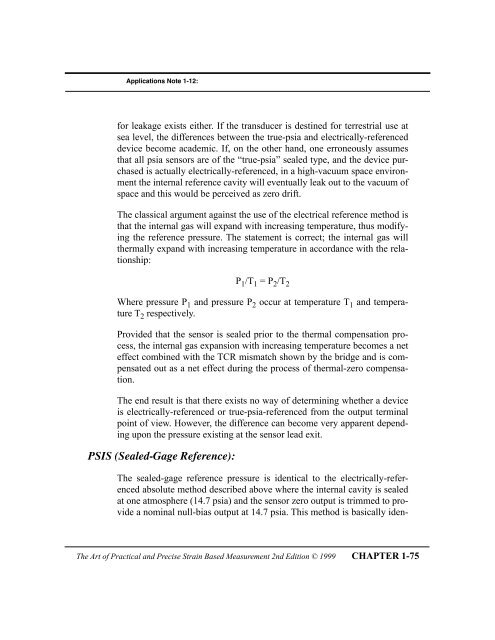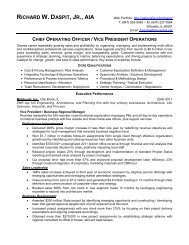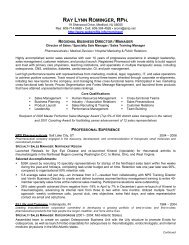The Art of Practical and Precise Strain Based ... - Webprofile.info
The Art of Practical and Precise Strain Based ... - Webprofile.info
The Art of Practical and Precise Strain Based ... - Webprofile.info
- No tags were found...
Create successful ePaper yourself
Turn your PDF publications into a flip-book with our unique Google optimized e-Paper software.
Applications Note 1-12:for leakage exists either. If the transducer is destined for terrestrial use atsea level, the differences between the true-psia <strong>and</strong> electrically-referenceddevice become academic. If, on the other h<strong>and</strong>, one erroneously assumesthat all psia sensors are <strong>of</strong> the Òtrue-psiaÓ sealed type, <strong>and</strong> the device purchasedis actually electrically-referenced, in a high-vacuum space environmentthe internal reference cavity will eventually leak out to the vacuum <strong>of</strong>space <strong>and</strong> this would be perceived as zero drift.<strong>The</strong> classical argument against the use <strong>of</strong> the electrical reference method isthat the internal gas will exp<strong>and</strong> with increasing temperature, thus modifyingthe reference pressure. <strong>The</strong> statement is correct; the internal gas willthermally exp<strong>and</strong> with increasing temperature in accordance with the relationship:P 1 /T 1 = P 2 /T 2Where pressure P 1 <strong>and</strong> pressure P 2 occur at temperature T 1 <strong>and</strong> temperatureT 2 respectively.Provided that the sensor is sealed prior to the thermal compensation process,the internal gas expansion with increasing temperature becomes a neteffect combined with the TCR mismatch shown by the bridge <strong>and</strong> is compensatedout as a net effect during the process <strong>of</strong> thermal-zero compensation.<strong>The</strong> end result is that there exists no way <strong>of</strong> determining whether a deviceis electrically-referenced or true-psia-referenced from the output terminalpoint <strong>of</strong> view. However, the difference can become very apparent dependingupon the pressure existing at the sensor lead exit.PSIS (Sealed-Gage Reference):<strong>The</strong> sealed-gage reference pressure is identical to the electrically-referencedabsolute method described above where the internal cavity is sealedat one atmosphere (14.7 psia) <strong>and</strong> the sensor zero output is trimmed to providea nominal null-bias output at 14.7 psia. This method is basically iden-<strong>The</strong> <strong>Art</strong> <strong>of</strong> <strong>Practical</strong> <strong>and</strong> <strong>Precise</strong> <strong>Strain</strong> <strong>Based</strong> Measurement 2nd Edition © 1999 CHAPTER 1-75
















